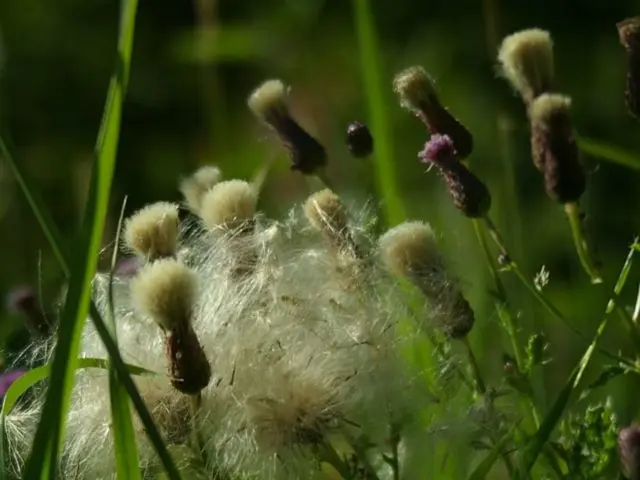Strategies for Eradicating Snails from Your Garden
In your garden, you've neatly planted a row of tiny brassica oleracea var. botrytis, better known as broccoli seeds. However, the next morning, you discover a startling sight - the foliage is riddled with peculiar holes, and some seedlings are missing! It appears as though you've become a victim of nocturnal pests - slugs.
"Slugs are soft-bodied creatures that dwell in moist environments, feeding on numerous types of edible and ornamental plants," explains Dr. Rafia Khan, an assistant professor and extension entomologist at Texas A&M AgriLife Research and Extension Center. "As they are primarily active during the night, you're likely to first notice the damages before easily identifying the culprit."
During daylight hours, slugs typically hide in secluded spots, such as under mulch, leaf litter, or potted plants on the patio. "They become active again when temperatures cool down, after a heavy rain shower, or on an overcast day," adds Wendy Wilber, the statide master gardener volunteer coordinator for the University of Florida Institute of Food and Agricultural Sciences.
Slugs exhibit a peculiar reproductive feature, as they possess both male and female reproductive organs. This quality allows them to lay eggs at various locations besides the soil, such as beneath protective leaf coverings. As they can reproduce numerous times throughout the year and their eggs can survive the winter as well, slug infestations can persist for the whole planting season.
Slugs are not entirely unwanted, as they contribute to breaking down decaying plant matter and act as a crucial component in the food chain for various organisms like birds, moles, toads, carnivorous ground beetles, and firefly beetles. However, their increased appetite can lead to substantial damage in a short amount of time when concentrated in your garden.
Despite their beneficial role in the ecosystem, you'll undoubtedly want to minimize or eliminate the presence of slugs in your green space. Unfortunately, there isn't a foolproof method to eradicate slugs, but by employing a blend of these strategies, you can effectively manage their populations.
Managing Slug Populations:
- Pay Attention to the Early Signs: Look for indicators of slug activity, such as overnight damage to foliage and slimy trails, to pinpoint when slugs are causing damage.
- Scan for Slugs in Optimal Conditions: Search for slugs in the early morning or late evening when temperatures are cool, after rain showers, or during cloudy days. Inspect hiding places like underneath nearby benches, thick foliage, under large leaves, and beneath potted plants. Utilizing gloves, collect the slugs and dispose of them in a bucket filled with soapy water.
- Eliminate Shelters: Remove hiding spots such as by elevating planters with pot feet, thinning excessive mulch, and disposing of rotting wood, debris piles, and rocks. Water early in the day to allow plants and soil to dry out and prevent pests from taking refuge.
- Plant Slug-Unattractive Plants: Opt for herbs like rosemary, geraniums, sage, and lavender, which possess strong scents that slugs generally avoid.
- Fall Clean Up: Perform a post-season clean-up of vegetation from problem areas, such as areas where you've had slug issues throughout the season. This practice may help decrease the number of overwintering eggs.
- Utilize Cardboard Traps: Set out pieces of cardboard or thin plywood on the garden surface to lure in slugs. They can be easily collected, tossed into a bucket of soapy water, and discarded.
- DIY Traps: Create homemade traps using containers, filled with water, yeast, and sugar, to drown slugs. The mixture must be replaced every few days to ensure its effectiveness.
- Barrier Methods: Utilize abrasive compounds like diatomaceous earth, which irritates slug's soft bodies, or copper foil tape, which alters their movement with an electric shock.
- Commercial Slug Baits: Consider using iron phosphate-based commercial baits, which impact slug's metabolism without requiring frequent re-application. Ensure you follow the instructions on the label and be aware that metaldehyde-based commercial baits are not recommended for use in gardens containing edibles, require frequent re-application, and can be harmful to pets and wildlife.
By employing these strategies in conjunction, you can minimize slug damage in your garden and enjoy the fruits of your labor without pest-related interruptions.
- Dr. Khan from Texas A&M AgriLife suggests that the holes in your broccoli seeds' foliage and missing seedlings might be caused by garden pests, specifically slugs, which are active at night.
- Southern Living magazine suggests using Gardening Ideas to combat slugs, such as establishing a barrier around your broccoli plants with diatomaceous earth or copper foil tape to deter them.
- Agrilife Extension recommends following their instructions to care for your garden, which includes managing slug populations during the planting season by removing hiding spots and collecting them in soapy water in the early morning or late evening.
- The weather plays a role in slug activity, as they become active after rain showers or on overcast days, so it's crucial to water early in the day and check your garden for slug damage when temperatures are cool.
- Slugs can be beneficial to the ecosystem by breaking down decaying plant matter and serving as food for various organisms, but their increased appetite can lead to substantial damage in a short amount of time, making it important to employ a blend of strategies to manage their populations in your garden.







